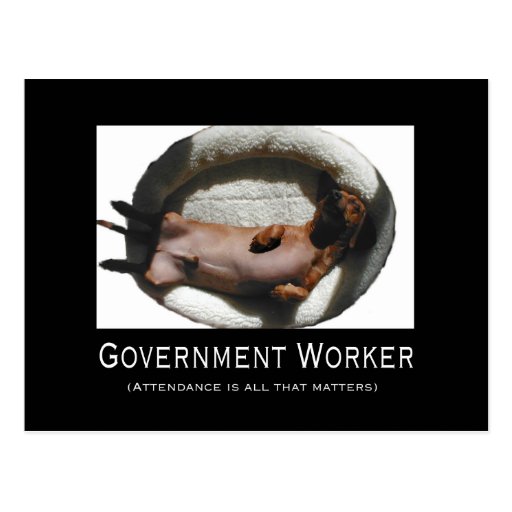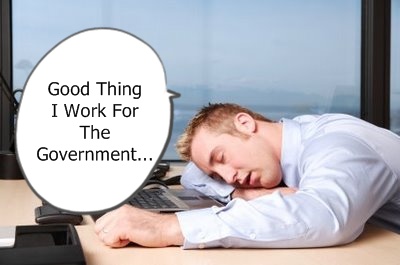![]()
The Affordable Care Act is the single most contentious political action of my lifetime since the Vietnam War. It touches everyone in one way or another, and often in profoundly personal ways. Some see it is a godsend and others as an arrow aimed directly at the heart of the American experiment. Some will experience healthcare that is now available for themselves and their families for the first time, while others will experience the loss of a system that had served them well. The story in the Wall Street Journal this week of the cancer survivor Edie Littlefield Sundby, who lost her doctors and affordable care in the middle of a true life-and-death battle, is poignant. It turns out that not only can she not buy insurance that will cross state lines, she cannot buy insurance in California that will cross county lines!
As I highlighted a few weeks ago, the US system is dysfunctional, yet the potential for positive change is rather spectacularly illustrated by work done by Dr. Jeff Brenner in Camden, New Jersey. Basically, he found that 1% of the patients in Camden were responsible for 30% of hospitalization costs. Sometimes called super utilizers, high utilizers, or frequent fliers, these patients have complex medical conditions and often lack social services such as transportation or knowledge about how to use the health system most effectively. By some estimates, 5% of these patients account for more than 60% of all healthcare costs. This is a system that is so dysfunctional that it does not even work for those who are getting the care! There are scores of such opportunities throughout the healthcare system to reduce costs and improve services, so I write not of a bleak healthcare future, just a profoundly changing one.
Peggy Noonan writes compellingly today about the problematical rollout of Obamacare.
They said if you liked your insurance you could keep your insurance – but that’s not true. It was never true! They said if you liked your doctor you could keep your doctor – but that’s not true. It was never true! They said they would cover everyone who needed it, and instead people who had coverage are losing it – millions of them! They said they would make insurance less expensive – but it’s more expensive! Premium shock, deductible shock. They said don’t worry, your health information will be secure, but instead the whole setup looks like a hacker’s holiday. Bad guys are apparently already going for your private information.
And now there are reports the insurance companies are taking advantage of the chaos of the program, and its many dislocations, to hike premiums. Meaning the law was written in such a way that insurance companies profit on it.
Today the Manhattan Institute released a report that shows that insurance premiums are going up an average of 41% in 49 states, although there are seven “blue” states where the costs go down. Go figure. New York sees a drop of 40%. The analysis of the HHS numbers shows Obamacare will increase underlying insurance rates for younger men by an average of 97 to 99 percent, and for younger women by an average of 55 to 62 percent. Worst off is North Carolina, which will see individual-market rates triple for women and quadruple for men. Older people acquire a large advantage over younger people in the insurance cost game.
And the rest of the world looks on and wonders what we are thinking. And how can we manage to do this so badly? Not just the roll-out – I mean, they don’t understand our whole healthcare system. This weekend my Code Red coauthor, Jonathan Tepper, sent out a note that not only illustrates the confusion and dismay in much of the world about US healthcare policies but also gives us a true Outside the Box lesson in how not to design a healthcare system.
Jonathan is quite special. He speaks about five languages fluently with no accents and is a former Rhodes scholar, a wicked smart economist, and a good writer; and he seemingly works around the clock. While Jonathan is a US citizen, he is quintessentially European, having grown up in Europe, with much of his early life spent in Madrid, at a drug rehab center that his parents founded and directed. He mentions with a smile that his playmates as a young boy were drug addicts. His view of the US has a definite European flavor to it, and as you read this, think about it coming from the pen of a conservative European economist (there are a few!).
I left in the 19 links Jonathan provides as the sources for his thoughts, for those interested in a further deep-dive exploration. It will be interesting to see the comments, all of which I make a point of reading, by the way. If you can take the time to write to me, the least I can do is read.
I started this note in Cleveland, where I finished up a daylong health check-up with Dr. Mike Roizen, which went better than I had hoped. I asked frontline employees all day what they thought of the new healthcare law. I was not hearing happy thoughts, as many are concerned about their jobs. And then I dropped by to see my 96-year-old mother on the way home, and we talked about her healthcare. “I have not seen a doctor for a long time, but it’s OK. I think all they do today is just make guesses anyway,” she remarked – the state of healthcare from the point of view of the elderly.
The focus tonight is the future of healthcare. Dr. Mike West, CEO of Biotime, is in Dallas for a layover between flights, and we will catch up on the state of stem cell research and on my personal genome, which he arranged to get done – but more on that in a few weeks.
It is odd. We have made such progress on so many technological fronts, and the price of new tech keeps going down – except in healthcare. But then, politicians and lobbyists are involved, which I guess is part of Jonathan Tepper’s point.
Have a great week and get some exercise, eat healthy, and invest wisely, because you are going to live a lot longer than you thought.
Your watching my apartment construction completion date keep slipping analyst,
John Mauldin, Editor
Outside the Box[email protected]
Jonathan Tepper on Obamacare
Dear friends,
Please pardon this long email, but after reading endless drivel on Obamacare, I needed to write this.
I’m afraid almost all discussions on the left and right regarding the Affordable Care Act (ACA) miss some very basic things. So I hope this email will explain a few economic ideas and put them into perspective for you, whether you’re on the left or right and whether you like Obamacare or not.
Before I do that, though, let me say that I’m a raging capitalist and I’m in favor of universal healthcare coverage. I’m indifferent as to having either (1) a 100% government-guaranteed single-payer system or (2) a 100% private solution where the government guarantees that the poor are fully covered. Each has its pros and cons. For countries like Spain and the UK, a single-payer national system works. (I’ve lived in both countries almost all my life, and their healthcare systems work. The only time I’ve ever paid $250 for an aspirin was in a US hospital.) On the other hand, private solutions work very well for Singapore and Switzerland. So one model is purely public, and it works; and the other is purely private, and it works. There is a lot of demand for healthcare, so you have to ration medical care via price or quantity. That’s basic economics. It is for voters and politicians to decide what they prefer. I’m indifferent to the solution, as long as it is well thought out and implemented and in fact provides universal coverage. The problem is that the ACA takes the worst elements of public and private and fails to provide universal coverage for millions of people.
Now, let’s look beyond good intentions and see how the ACA works in practice.
The main egregious problem with the ACA is that it increases concentration in the insurance and medical markets. It forces consumers to buy into oligopolistic and monopolistic marketplaces. Insurance and medical companies stocks have all gone up since Obamacare passed. (They’ve gone up twice as much as the S&P this year.) What these companies are all telling us is that the act is good for their business and good for their margins.
Before the ACA, the US health insurance market was extremely uncompetitive, as this article in the NY Times notes:
As a general rule, the larger, more densely populated states have the most choice — and even the biggest insurer controls only a minority share of the market. According to statistics from the American Medical Association, the leading insurance provider in California covers 24 percent of the population, while in New York the figure is 26 percent and in Florida, 30 percent.
But there are nine states where a single insurer covers 70 percent or more of the people. In Hawaii, one insurer covers 78 percent. In Alabama, it’s 83 percent. And in at least 17 other states one insurer covers at least half the population.
Some members of the Senate Finance Committee, which is taking a lead on health care legislation, come from states where the insurance market is highly concentrated. The Democratic chairman, Senator Max Baucus, is from Montana, where 75 percent of people are covered by one major insurer, Blue Cross Blue Shield of Montana. For Senator Charles E. Grassley, Republican of Iowa, the figure is 71 percent, by Wellmark. For Senator Olympia Snowe, Republican of Maine, it’s 78 percent, by WellPoint.
“For many Americans, the idea that they have a choice of health plans is about as mythical as unicorns,” said Jacob Hacker, professor of political science at Yale University.
In theory, the ACA could have improved things, and many supporters think it does through exchanges. Unfortunately, it didn’t. Under the Affordable Care Act there will be far fewer choices and less competition. Don’t take my word for it; read this NY Times article.
Of the roughly 2,500 counties served by the federal exchanges, more than half, or 58 percent, have plans offered by just one or two insurance carriers, according to an analysis by The Times of county-level data provided by the Department of Health and Human Services. In about 530 counties, only a single insurer is participating.
This is truly staggering, when you consider it. Citizens will now be forced to buy insurance from oligopolies and in many cases monopolies. They’re not getting healthcare from the government; they’re being forced to buy from private companies that have pricing power and market dominance. Insurance companies are still exempt from anti-trust supervision. This would never happen in other industries. You don’t need to know anything besides basic economics to understand that oligopolies and monopolies are bad for consumers. Consider having to pay for phone services from one or two phone providers. (Wait, we already had that, and Ma Bell was broken up…)
Medical companies are also exempt from fair pricing laws. If you go to a hospital, you’ll get a different price depending on whether you’re uninsured or Medicaid pays for you or your insurance pays for you. You can’t drive into a gas station and be charged an arbitrary cost after you’ve filled your car, but you can be charged an arbitrary number by a hospital. (Imagine: a black, a WASP, and a Jew go to a gas station, and they all get different prices. Wait, we got rid of that injustice too…) In theory, the ACA fixes fair pricing laws, but it doesn’t apply to most hospitals. See “Federal health law falls short of a goal” in the Boston Globe.
In the 21st century, states still control and regulate insurance, which means fragmentation, very high barriers to entry, and local oligopolies. It is insane that the Federal government regulates banks at a national level via the Federal Reserve and the FDIC but allows insurers to have local market dominance. (The law that allows this is the 1945 McCarran-Ferguson Act.) If you’re curious about how insurance companies are oligopolies, read here. And read this … and this.
You can ship and sell Coca Cola across state lines, but you can’t sell insurance across state lines. Some argue that you could get one lax insurance regulator in North Dakota, and then insurance companies would all set up shop there and start selling across state lines. That has an easy solution: have one national regulator and let insurance companies compete across state lines.
Not only is there a lack of competition among insurers, there is a lack of competition among hospitals. This has happened because antitrust policy has been so inadequate for so long in the health sector. See “Health Care Needs Stronger Market Forces” in Forbes. (Here is a more in-depth paper, if you’re curious.)
The problems that arise from a lack of competition are rife on the pharmaceutical and medical side as well. Obamacare will do almost nothing to change that. See “How a Cabal Keeps Generics Scarce” in the NY Times. It should come as no surprise that medical and pharma companies helped draft the ACA. Who said Congress won’t turn a few tricks for the right price? See “ObamaCare’s Secret History” in the WSJ.
In theory, the ACA will control costs and won’t let insurance companies and hospitals gouge us, but these types of regulations haven’t worked in the past. Howard Dean is a doctor and a Democrat. His very thoughtful views on how pricing regulations haven’t worked are presented here. If you think costs will fall and insurers won’t profit, I’ve got a bridge to sell you in Brooklyn. The law is complex, badly written, and will be gamed. See “The Coming Clash over Insurers’ Compliance with Obamacare” from the Independent Institute and “HHS Releases Final Medical Loss Ratio Regulations” in the WSJ.
I highly recommend you read Matt Taibbi’s chapter on Obamacare in his book Griftopia. The book is highly worth buying and reading. It is informative, entertaining, and extremely infuriating. Your blood will boil after you read it. Taibbi establishes the point that the Affordable Care Act will screw Americans. This case is also made by the Institute of Economic Affairs, in “The scourge of Obamacare.”
In the United States, one of the most protuberant and harmful political myths — one shared by subscribers to almost all political persuasions — is the odd, naive idea that big business and big government are permanent antagonists. As a historical and empirical matter, of course, nothing could be further from the truth, a reality thrown into sharp relief by the political machinations underlying Obamacare. The new law is fundamentally anti-competitive and anti-small business, riddled with onerous regulations and handouts to favoured corporations. As usual, the relationship between big business and big government is not one of rivalry, but of symbiosis, routing genuine free markets in favour of collusion.
The ACA won’t cover everyone, and it will force people seeking coverage to buy from monopolists. Many people will get subsidies for their new insurance policies, and many people who didn’t have coverage will now have coverage. This is great news. However, it would be hard to design a worse system if you tried. There are simpler ways by which we could have covered everyone without forcing people to participate in private oligopolies and monopolies.
One of the biggest problems in the US are medical costs. We spend far more than any other country, almost twice the OECD average. This problem will not be fixed by Obamacare and indeed will only get worse due to the spiralling of price increases between insurance companies and hospitals, given the lack of competition.

Source
Furthermore, as you can see from this interactive table, we spend trillions of dollars more than other countries do, yet we don’t achieve better outcomes.
Chile, Hong Kong, and Singapore, for example, spend one fourth what we do and achieve better outcomes and longer lifespans. So spending more money isn’t a solution. In fact, imagine what we could do if we cut our healthcare spending in half. We’d free up over a trillion dollars for other things. That’s what economists call consumer surplus. Even in crazy Washington, where congressmen think money grows on trees, a trillion is a large number.
In America one subject that is taboo is healthcare before death. Almost all healthcare costs are incurred in the last twelve months of people’s lives. Modern medicine tends to delay natural death rather than extend healthy life. That is why doctors consume less healthcare than the average person. They understand what medicine can do and can’t do. I highly recommend reading this article in the WSJ. Ask any doctor, and they’ll confirm this.
In a 2003 article, Joseph J. Gallo and others looked at what physicians want when it comes to end-of-life decisions. In a survey of 765 doctors, they found that 64% had created an advanced directive — specifying what steps should and should not be taken to save their lives should they become incapacitated. That compares to only about 20% for the general public. (As one might expect, older doctors are more likely than younger doctors to have made “arrangements,” as shown in a study by Paula Lester and others.)
Why such a large gap between the decisions of doctors and patients? The case of CPR is instructive. A study by Susan Diem and others of how CPR is portrayed on TV found that it was successful in 75% of the cases and that 67% of the TV patients went home. In reality, a 2010 study of more than 95,000 cases of CPR found that only 8% of patients survived for more than one month. Of these, only about 3% could lead a mostly normal life.
Furthermore, 5% of patients create 50% of costs. These costs are all in the last days of life. See this article in Forbes.
Dr. Susan Dale Block, Chair and Director of Psychosocial Oncology and Palliative Care at the Dana Farber Cancer Institute and Brigham and Women’s Health Care, recently shared some data with her colleagues. In the Archives of Internal Medicine, a study asked if a better quality of death takes place when per capital cost rise. In lay terms (because trying to explain the data and methodology requires about 100 IQ points that I don’t have) the study found that the less money spent in this time period, the better the death experience is for the patient.
It seems that no matter how much money you use during that last year/month, if the person is sick enough, the effort makes things worse. A lot of the money being spent is not only not helping, it is making that patient endure more bad experiences on a daily basis. The patient’s quality of life is being sacrificed by increasing the cost of death.
We will all die. There is no way around that. Until we have an adult conversation about how we die and recognize that we spend too much on medicine we don’t need, we won’t reduce our costs.
Sorry for such a long email. These are a few brief thoughts on the key issues that the press neglects to mention. I’d have to write a book to discuss all the relevant issues. I’ve provided more links in the postscript to my email if you’re curious about the problems of oligopoly, market concentration, and local regulation in the US insurance and healthcare sectors.
While the US lines the pockets of insurance companies, I’ll be enjoying the socialized medical system in the UK. My guess is that Obamacare has been made purposefully grotesque in order to make people clamor for a single-payer system. I’m sure the US will eventually get one. Personally, I think congressmen and -women are too stupid and venal to do anything good. Until then, we’ll have to wait for the ACA to derail before we see any genuine reform.
Best,
Jonathan
P.S. If you’re curious about the problems of insurance, medicine, and oligopolies, you can read further.
Regional monopolies
The American Medical Association’s bi-annual survey of the nation’s health insurance marketplace, released Tuesday, found 60 percent of the nation’s metro areas where two insurers had a combined share of 70 percent or more of the market. That’s up from 53 percent two years ago.
Dominant insurer market share
Hospital oligopolies
Increase in premiums under Obamacare
Worst outcomes for mix of public and private
Local competition
Out of control oligopolies — how they’re blowing up our medical budget
Statistics on oligopolies
Health Care for America Now! (HCAN) released a report in May that uses data provided by the American Medical Association to demonstrate that 94% — more than 9 out of 10 — of the country’s insurance markets meet the Justice Department definition of “highly concentrated,” in relation to the potential for anti-trust action. So extreme is the level of consolidation, that HCAN has sent a letter [Note: PDF file] to the Justice Department’s Antitrust Division, asking it to investigate the state of the health insurance marketplace.
The rest of the report’s findings are every bit as striking:
• In the past 13 years, more than 400 corporate mergers have involved health insurers, and the small number of companies that now dominate local markets haven’t delivered on promises of increased efficiency.
• Shrinking competition has allowed the remaining firms to charge higher fees, and premiums have gone up more than 87 percent, on average, over the past six years.
• Meanwhile, profits at ten of the country’s largest publicly traded health insurance companies rose 428% from 2000 to 2007, from $2.4 billion to $12.9 billion.
• Consolidation of market share among a smaller number of insurers disproportionately disadvantages rural and lower population states. In Hawaii, Rhode Island, Alaska, Vermont, Alabama, Maine, Montana, Wyoming, Arkansas, and Iowa, the two largest health insurers control at least 80 percent of the statewide market.
Fragmented regulation insurance. Also here. And here.
Commerce clause and restraints of trade
Like Outside the Box?
Sign up today and get each new issue delivered free to your inbox.
It’s your opportunity to get the news John Mauldin thinks matters most to your finances.
© 2013 Mauldin Economics. All Rights Reserved.
Outside the Box is a free weekly economic e-letter by best-selling author and renowned financial expert, John Mauldin. You can learn more and get your free subscription by visiting www.MauldinEconomics.com.
Please write to [email protected] to inform us of any reproductions, including when and where copy will be reproduced. You must keep the letter intact, from introduction to disclaimers. If you would like to quote brief portions only, please reference www.MauldinEconomics.com.
To subscribe to John Mauldin’s e-letter, please click here: http://www.mauldineconomics.com/subscribe
To change your email address, please click here: http://www.mauldineconomics.com/change-address
Outside the Box and MauldinEconomics.com is not an offering for any investment. It represents only the opinions of John Mauldin and those that he interviews. Any views expressed are provided for information purposes only and should not be construed in any way as an offer, an endorsement, or inducement to invest and is not in any way a testimony of, or associated with, Mauldin’s other firms. John Mauldin is the Chairman of Mauldin Economics, LLC. He also is the President of Millennium Wave Advisors, LLC (MWA) which is an investment advisory firm registered with multiple states, President and registered representative of Millennium Wave Securities, LLC, (MWS) member FINRA, SIPC, through which securities may be offered . MWS is also a Commodity Pool Operator (CPO) and a Commodity Trading Advisor (CTA) registered with the CFTC, as well as an Introducing Broker (IB) and NFA Member. Millennium Wave Investments is a dba of MWA LLC and MWS LLC. This message may contain information that is confidential or privileged and is intended only for the individual or entity named above and does not constitute an offer for or advice about any alternative investment product. Such advice can only be made when accompanied by a prospectus or similar offering document. Past performance is not indicative of future performance. Please make sure to review important disclosures at the end of each article. Mauldin companies may have a marketing relationship with products and services mentioned in this letter for a fee.
Note: Joining The Mauldin Circle is not an offering for any investment. It represents only the opinions of John Mauldin and Millennium Wave Investments. It is intended solely for investors who have registered with Millennium Wave Investments and its partners at http://www.MauldinCircle.com (formerly AccreditedInvestor.ws) or directly related websites. The Mauldin Circle may send out material that is provided on a confidential basis, and subscribers to the Mauldin Circle are not to send this letter to anyone other than their professional investment counselors. Investors should discuss any investment with their personal investment counsel. You are advised to discuss with your financial advisers your investment options and whether any investment is suitable for your specific needs prior to making any investments. John Mauldin is the President of Millennium Wave Advisors, LLC (MWA), which is an investment advisory firm registered with multiple states. John Mauldin is a registered representative of Millennium Wave Securities, LLC, (MWS), an FINRA registered broker-dealer. MWS is also a Commodity Pool Operator (CPO) and a Commodity Trading Advisor (CTA) registered with the CFTC, as well as an Introducing Broker (IB). Millennium Wave Investments is a dba of MWA LLC and MWS LLC. Millennium Wave Investments cooperates in the consulting on and marketing of private and non-private investment offerings with other independent firms such as Altegris Investments; Capital Management Group; Absolute Return Partners, LLP; Fynn Capital; Nicola Wealth Management; and Plexus Asset Management. Investment offerings recommended by Mauldin may pay a portion of their fees to these independent firms, who will share 1/3 of those fees with MWS and thus with Mauldin. Any views expressed herein are provided for information purposes only and should not be construed in any way as an offer, an endorsement, or inducement to invest with any CTA, fund, or program mentioned here or elsewhere. Before seeking any advisor’s services or making an investment in a fund, investors must read and examine thoroughly the respective disclosure document or offering memorandum. Since these firms and Mauldin receive fees from the funds they recommend/market, they only recommend/market products with which they have been able to negotiate fee arrangements.
PAST RESULTS ARE NOT INDICATIVE OF FUTURE RESULTS. THERE IS RISK OF LOSS AS WELL AS THE OPPORTUNITY FOR GAIN WHEN INVESTING IN MANAGED FUNDS. WHEN CONSIDERING ALTERNATIVE INVESTMENTS, INCLUDING HEDGE FUNDS, YOU SHOULD CONSIDER VARIOUS RISKS INCLUDING THE FACT THAT SOME PRODUCTS: OFTEN ENGAGE IN LEVERAGING AND OTHER SPECULATIVE INVESTMENT PRACTICES THAT MAY INCREASE THE RISK OF INVESTMENT LOSS, CAN BE ILLIQUID, ARE NOT REQUIRED TO PROVIDE PERIODIC PRICING OR VALUATION INFORMATION TO INVESTORS, MAY INVOLVE COMPLEX TAX STRUCTURES AND DELAYS IN DISTRIBUTING IMPORTANT TAX INFORMATION, ARE NOT SUBJECT TO THE SAME REGULATORY REQUIREMENTS AS MUTUAL FUNDS, OFTEN CHARGE HIGH FEES, AND IN MANY CASES THE UNDERLYING INVESTMENTS ARE NOT TRANSPARENT AND ARE KNOWN ONLY TO THE INVESTMENT MANAGER. Alternative investment performance can be volatile. An investor could lose all or a substantial amount of his or her investment. Often, alternative investment fund and account managers have total trading authority over their funds or accounts; the use of a single advisor applying generally similar trading programs could mean lack of diversification and, consequently, higher risk. There is often no secondary market for an investor’s interest in alternative investments, and none is expected to develop.
























